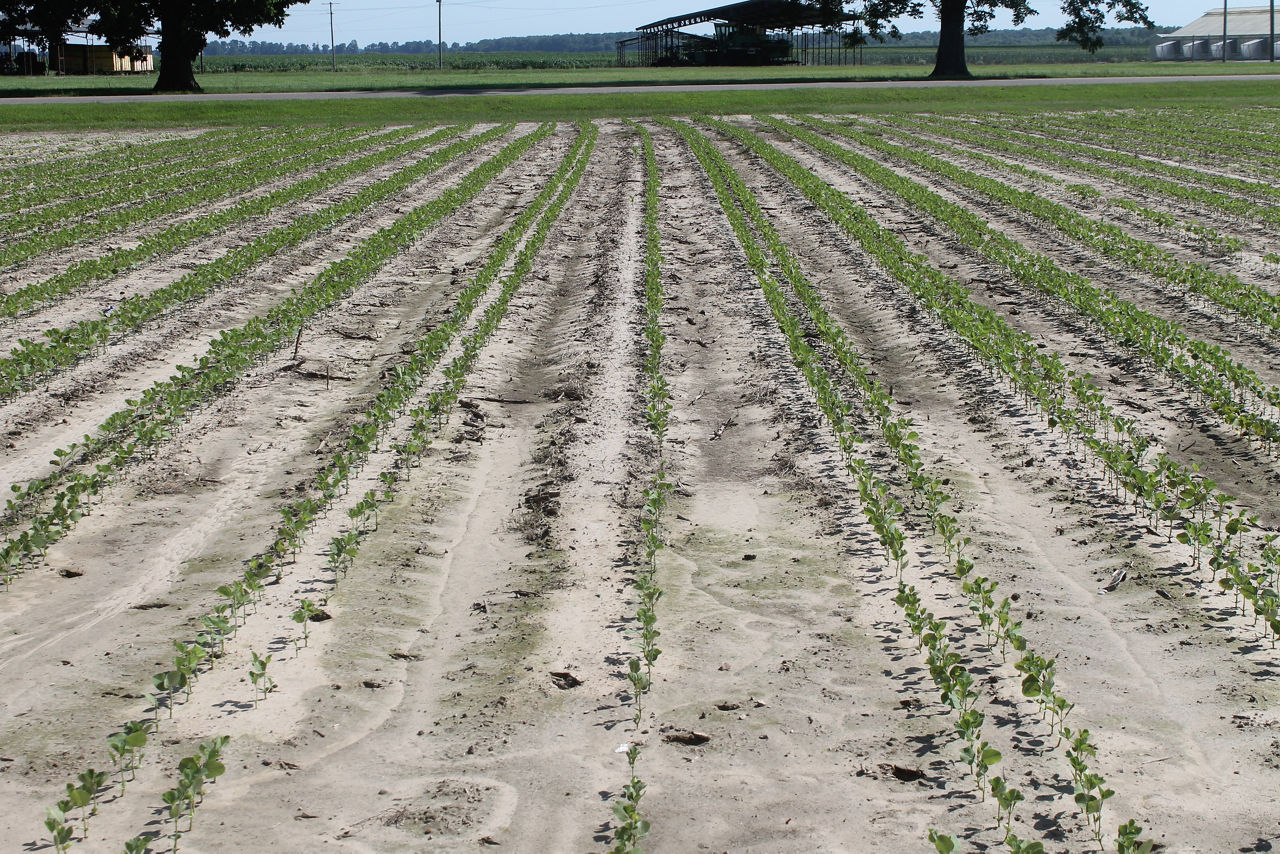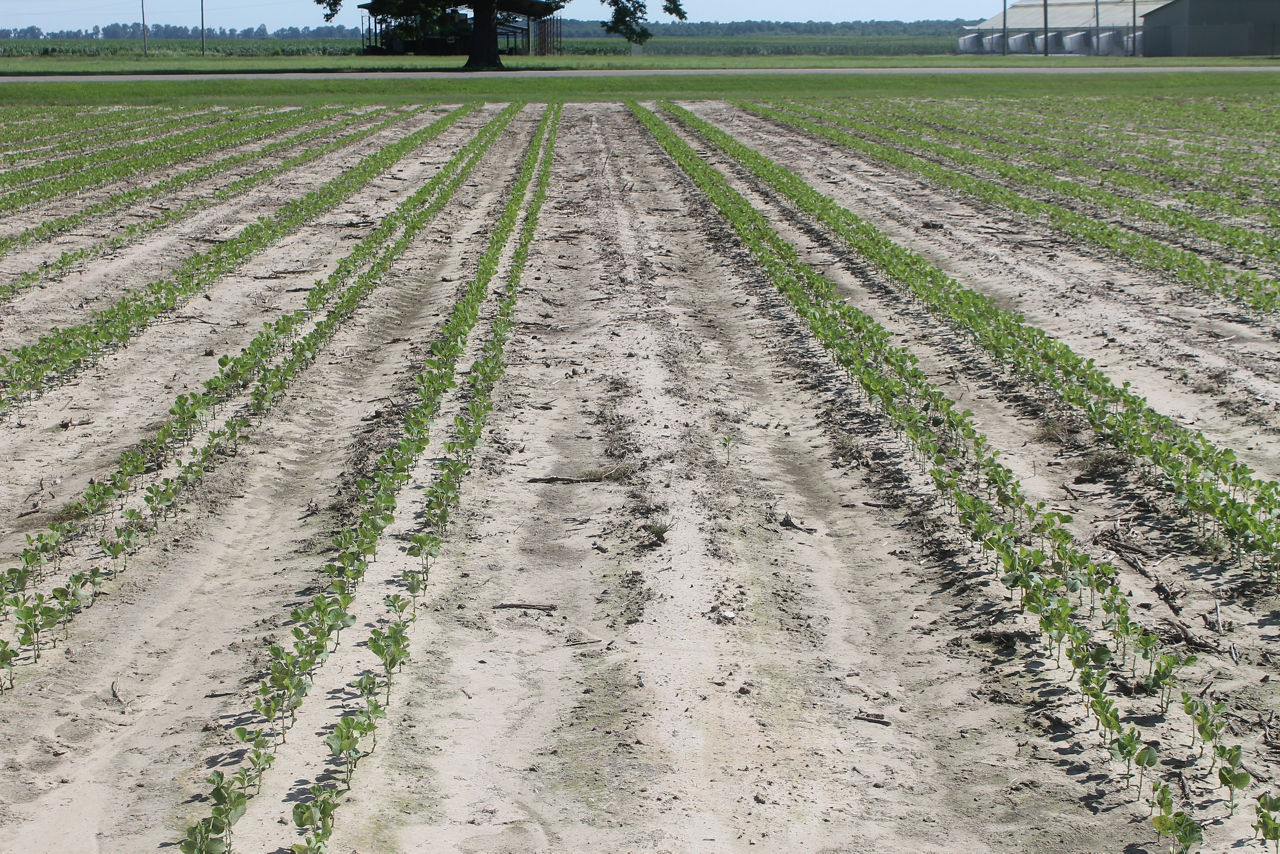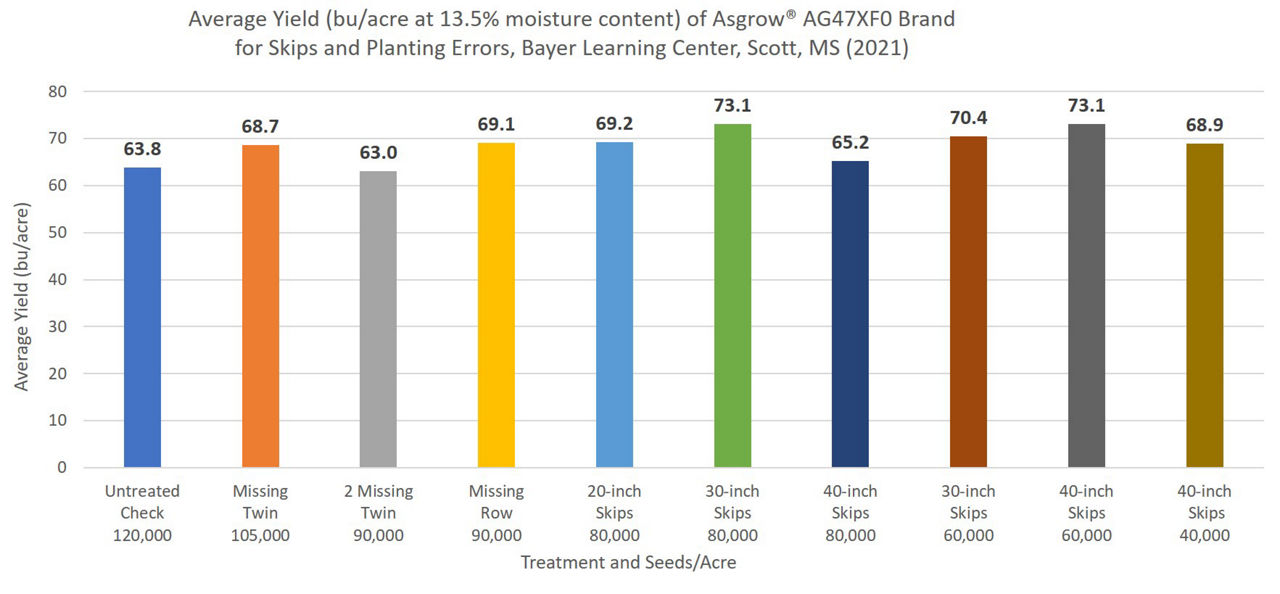10 MIN READ
Skips and Planting Errors in Soybean
November 8, 2021
TRIAL OBJECTIVE
Each season many soybean growers are faced with making replanting decisions.
Skippy stands from weather events, equipment malfunctions, and various other difficulties introduce skips, gaps, and variability into many soybean fields.
Previous work has shown that a soybean stand has tremendous ability to compensate for stand variability. Particularly when gaps are generally smaller than the row spacing (30 to 40 inches).
This study was undertaken to consolidate previous experience and revalidate older data when applied to newer germplasm.
In many cases, replanting can likely be avoided thereby saving the associated expense and trouble.
RESEARCH SITE DETAILS
| Location | Scott, MS |
| Soil Type | Commerce silt loam |
| Previous Crop |
Corn |
| Tillage Type |
Conventional |
| Planting Date | 05/26/21 |
| Harvest Date | 9/8/2021 |
| Potential Yield (bu/acre) |
75 |
| Seeding Rate (seeds/acre) |
Various |
- All agronomic decisions and crop inputs were per local standards.
- Planted on 38-inch beds in a twin row configuration 7.5 inches apart.
- Products planted:
- Asgrow® AG46XF0 Brand
- Asgrow® AG47XF0 Brand
- Planting Configuration Treatments
- 120,000 seeds/acre (Untreated Check (UTC))
- 105,000 seeds/acre (Missing Twin)
- 90,000 seeds/acre (2 Missing Twins)
- 90,000 seeds/acre (Missing Row)
- 80,000 seeds/acre (20-inch skips)
- 80,000 seeds/acre (30-inch skips)
- 80,000 seeds/acre (40-inch skips)
- 60,000 seeds/acre (30-inch skips)
- 60,000 seeds/acre (40-inch skips)
- 40,000 seeds/acre (40-inch skips)
- In field variability was introduced using a variety of techniques. For the missing row and missing twin treatments, rows were simply not planted.
- For skip treatments, a spread sheet, referred to as the “Skipulator” (vs a calculator) was used to calculate planting parameters to introduce the desired skip treatments into plots. In short, it takes the desired skip size or seeding rate into account and generates the number of planter plate cells to block or provides the seeding rate to enter into the planting equipment to achieve the target seeding rate with the skips desired for each treatment (Figures 1 thru 6).
- Harvested using commercial equipment and yields were corrected to 13.5% moisture content for reporting.






UNDERSTANDING THE RESULTS
Across the trial, the average yield ranged from 62.4 to 74.2 bu/acre at 13.5% moisture content (Figure 7).
On average, the soybean plants demonstrated an ability to compensate for much of the introduced variability in the missing row and in-row skip treatments (Figures 7, 8, and 9).
Numerically, the highest yielding treatments in the demonstration tended to be some of the skippy treatments as compared to the untreated check. This is likely due to the miscellaneous foliar diseases that developed during the season. Skips and missing rows tended to minimize some of these disease issues during 2021. Regardless of the favorable yields associated with skips and missing rows, skips should not be introduced as a planting practice.
This data reinforces the ability of soybean plants to compensate for planting errors and skippy stands.
There was one low yielding plot in this demonstration (60,000 seeds/acre with 40-inch skips in Asgrow® AG46FX0 Brand) that had a hot sandy spot across the plot (Figure 9).
)


KEY LEARNINGS
Soybean plants continue to demonstrate a tremendous ability to compensate for planting errors and poor emergence when those events occur.
Growers should carefully consider weed control implications when making soybean replanting decisions. Extra herbicide applications and in some cases, replanting could be recommended to maintain acceptable levels of weed control.
Many factors should be carefully considered when deciding to replant a soybean field. It is likely that many fields can be managed to acceptable outcomes without replanting.
Please consult your local Asgrow® brand representative or agronomist for further information.
3011_R19